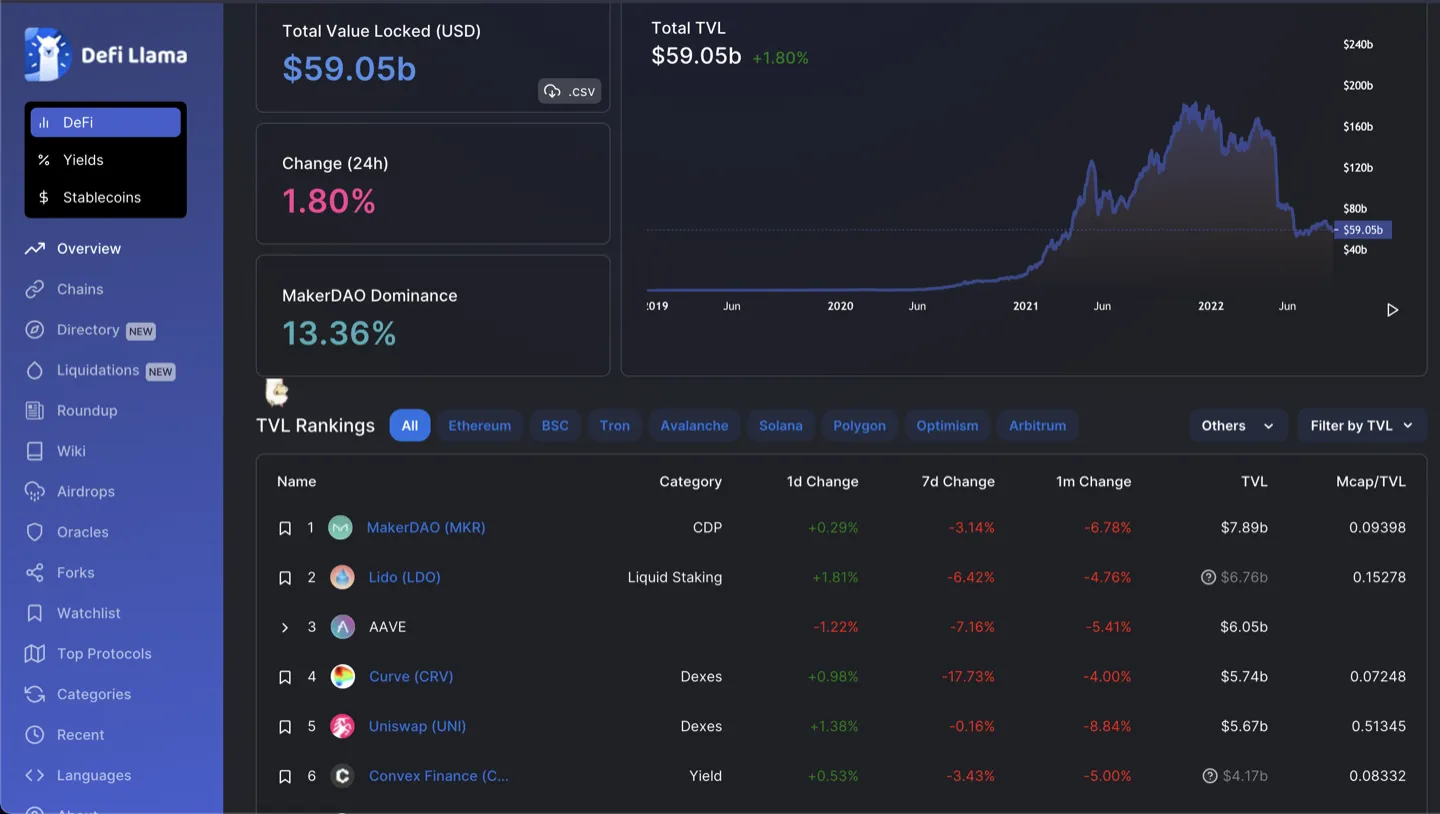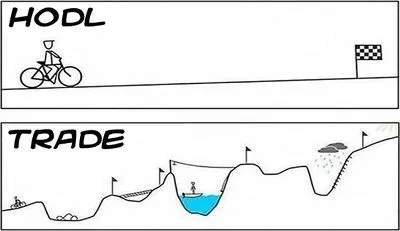How not to get Rekt in crypto
It is traumatic to lose your hard-earned money to crypto investments. Ensuring your money is SAFU comes down to understanding risk, due diligence, timing, and adequate education. Here are some of the things that will help you mitigate the risks involved while investing in crypto assets.
Do your own research (DYOR)
Before investing in any crypto asset, every investor should conduct their own due diligence.
Learn to identify crypto shills
It is foolish for anyone to invest in an asset just because their favorite or newfound crypto guru says it's a good investment. There are a lot of crypto analysts on youtube and social media who offer misleading advice to would-be investors.
They do so for a number of reasons:
- Sponsored by projects or VCs (venture capitalists) to whip retail buyers into buying a questionable project
- Influencers who better or for worse want to see tokens that they're personally invested in prices pump
- Over-confident analysts
This brand of influencers are called crypto shills. They prey on unwitting crypto investors to join their bandwagon(s), irrespective of a project's real viability.
Deal with FUD.
FUDsters are influencers who ignorantly or maliciously spread panic among investors of an asset. Their end goal is for other investors to sell off their holdings. Some FUDsters are actually crypto shills of rival projects, where they probably have a stake of sorts.
Other crypto FUDsters are stooges of legacy pre-crypto era and way of doing things e.g Peter Schiff. Such individuals, unlike their former counterparts, are fundamentally opposed to crypto ethos, vision, and promise.
New crypto investors should get accustomed to FUDsters announcing doomsday. They should not make their sell decisions based on negative messages. Instead, they should base their informed decision based on research. Primary sources of research should be:
Project's website (docs, whitepaper, tokenomics)
Project's Coingecko or CoinMarketCap page for price history, FDV, MMC.
Project's Github public page
Even for non-technical users, Github charts and activity graphs should guide a useful clue on level of active development of a project.
DefiLlama
DefiLlama tracks the amount value locked (TVL) in each crypto protocol. Higher TVL usually indicates high level of utility / demand of a given asset.

Learn about a project's fundamentals
Like any other asset, the price of any crypto asset represents an estimation of the underlying project's current or future utility. In other words, it's important to know the following:
- What real-world benefits does a crypto asset currently hold?
- What benefits/features does it promise to do in the future?
- Is the project's current trajectory in congruence with achieving its future goals? For a project to achieve its goals, those goals have to be realistic and grounded in facts. 2/ It also needs to have a good team and a well-laid roadmap to achieve those goals. This means that it also has to be well funded lest development comes to a halt.
HODL - avoid short-term investment strategies
Short-term crypto investors are often wrecked due to the following factors:
- Most crypto assets are highly volatile in the short term
- It takes time for crypto assets to gain adoption and develop utility.
New crypto investors should therefore invest with an aim to reap yields in the long term. Even in times of consistent price drops, hodl. Short-term price fluctuations shouldn't be treated as opportunities to sell. Lest this approach results in disastrous panic selling.

Credits to BitcoinWiki
Always invest what you are comfortable to lose
Like any other investment, investing in crypto comes with an associated risk. No matter how diligent one is in their research, there are always extraneous macro factors that are hard to predict. Such factors include black swan events, hacks, and legislative actions that might suddenly lead to unrecoverable losses.
For that reason, investors ought adequately to mitigate their exposure to possible loss. Taking loans on personal or family assets (e.g home, land, college fund savings) with an aim to invest in crypto should be considered unwise and reckless.
Learn about a project tokenomics
Newbies often fall into a trap by assuming that crypto assets with low prices have higher upside potential. This assumption fails to consider the market cap, circulating supply, and the maximum number of tokens of an asset.
A large number of tokens will result in a higher supply either immediately or in the future, and vice versa. Basic economics dictates that higher supply equals lower prices.
Therefore, if a token has a low price and a large supply, it's unlikely that the price will go up by a large factor. In fact, the price of some of the assets may already have seen their peak due to mindless speculation.
Dogecoin, for example, has a circulating supply of 132 billion coins at a price of $.0636 and a market capitalization of 8.4 billion. New DOGE tokens are minted every day indefinitely with no deflationary mechanism. Dogecoin enthusiasts have often made assertions that DOGE's price rise to $1 per unit. Dogecoin would have to at least 16X and match a market capitalization of 128 billion. In prevailing market conditions and Dogecoin's apparent lack of development, that expectation is improbable.
Learn about the difference between fully diluted valuation and market cap
Some crypto assets e.g Bitcoin, Cardano, Ergo, and BNB, among others, have a maximum number of tokens that can possibly exist. Such assets have an emission schedule where coins are released into circulation on a gradual basis.
When considering the price potential for such assets, interested investors ought to learn the difference between their maximum market cap and fully diluted valuation (FDV).
The maximum market cap (MMC) is the total number of tokens multiplied by the current price. FDV is the number of circulating tokens multiplied by the prevailing price.
Whenever there's a huge difference between the MMC and FDV, users should exercise caution. Especially if the token's emission schedule is aggressive, meaning the market will experience sustained sell pressure causing the price to tank.
Avoid the lure of abnormal APRs
Almost all proof of stake layer one governance coins offer staking opportunities to users where users can take advantage of single to triple digits APRs. Tokenized assets in the growing DeFi market also offer moderate to high APRs.
Inexperienced investors are often lured into buying tokens with high abnormal APRs. They can do so by directly investing in layer 1s or through DeFi yield farming markets. In both cases, the probability of short-term loss is usually very high either due to unforeseen sell pressure or impermanent loss.
A good example of this in play is Cardano's MinSwap yield farming opportunity. At the close of its LBE, the MinSwap MIN token was priced at 0.2518 ADA and even rose to above 0.3 ADA. At the time APRs in some of its yield farms rose above 300%. After sustained emissions via its yield farm pools and the crypto market bear market, the price of MIN has dropped by 87% to 0.043 ADA per coin. If yield farmers withdraw their liquidity, they face massive impermanent loss. Their loss wouldn't be MinSwap's team's fault, it would be due to poor risk assumptions on their part.

Note: MinSwap is used as an example here to showcase even good projects offering high APRs will not save you from short-term losses. This phenomenon is not unique to one project.
In the long term, if the underlying product's demand cannot keep up with the increasing supply, losses are likely.
Avoid leverage trading and futures
Margin and future trading in crypto offer insane profits if an investor gets a trade right, which they almost never do. Crypto markets are super volatile and therefore, fundamentally unpredictable.
All centralized crypto exchanges offer margin and future products with the knowledge that the 'house always wins'. Like the elusive gigantic profits, the losses are equally unproportionate. Even if you get a winning streak, one trade will often wipe off all your previous gains via sudden margin call.
Take profits regularly
Due to the cyclical nature of the crypto markets, investors should not consider withdrawing some of their profits during periods of sustained price increases. This profit-taking should not be done on a speculative basis. Instead, it should be done with the satisfaction that even if the market turns, the withdrawal will result in losses.
Investors who consistently took profits during a bull run are unlikely to get disheartened and sell at a loss during a bear market. Similarly, they are more likely to have sufficient liquidity to take advantage of lower prices during a downturn.
Fortify your crypto security with a hardware wallet whenever possible.
Investing in crypto is pointless if your investment's security is compromised. Investors should explore the best and most practical security measures available to them.
Whenever possible, an investor should store their crypto off exchanges. CEX provides a centralized point of failure where one can lose their money either due to hacking, insolvency, or both.
Ideally, an investor should familiarize themselves with hardware and software wallets in that order of preference.
Avoid bridged assets
The majority of crypto losses lost to hackers so far have occurred to cross-chain bridge hacks. Chainalysis, reported earlier in August that at least 69% of crypto hacks have been bridge hacks.
Just recently, thousands of investors lost a total of $190 million when the Nomad bridge was hacked. Just a few weeks after $100 million was lost via Harmony's horizon bridge hack in late June.
While bridged assets are a great step toward the interoperability push, the technology is still too young to guarantee safety. As long as bridges present a strong attack vector for hackers, investors would be wise to avoid bridged crypto assets.
First published on Jun 29, 2022
Bitcoin
